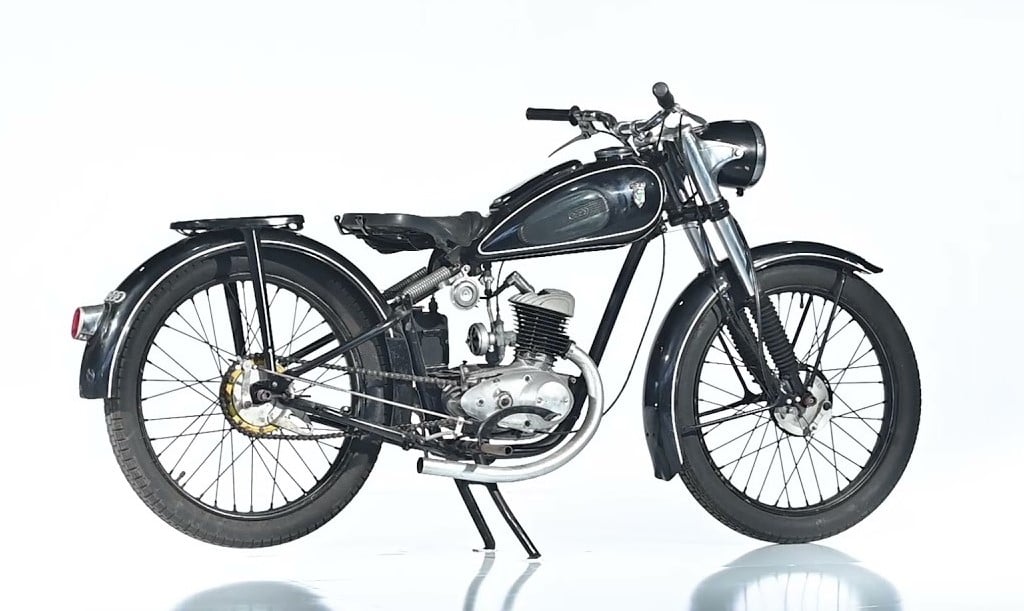DKW RT 125: Wartime Legacy and Open-Source Revelation
The DKW RT 125 was a revolutionary two-stroke motorcycle that had a profound influence on the global motorcycle industry. Its innovative design, including the Schnürle two-stroke loop scavenging process and efficient arrangement of transfer ports, propelled it to commercial success. After World War II, the RT 125 became an open-source blueprint that was replicated by manufacturers around the world, leading to the development of iconic motorcycles such as the BSA Bantam, Harley Hummer, and Yamaha YA-1. The DKW RT 125's impact on the motorcycle industry continues to be felt today.
GERMANY DKW1940'SMOTORCYCLES TWO STROKE
11/21/20233 min read


DKW RT 125: Wartime Legacy and Open-Source Revelation
Introduction
From being a symbol of German ingenuity to an open-source blueprint for the world, the DKW RT 125, a revolutionary two-stroke motorcycle that shook the world, has a story as fascinating as its design. Its innovative features and the subsequent global proliferation, spurred by post-WW2 consequences, resulted in its profound influence on the global motorcycle industry at large.
The DKW RT 125 was a marvel born out of the relentless pursuit of efficiency by DKW in the 1930s. The motorcycle sported an ingenious two-stroke engine that leveraged the Schnürle two-stroke loop scavenging process - a groundbreaking innovation that eliminated the need for a deflector piston. Pairing this revolutionary design with its unique arrangement of transfer ports, DKW pushed the envelope of efficiency and propelled RT 125 to the forefront of commercial success.
Schnürle Process and Transfer Port Innovations
The Schnürle process replaced traditional methods by introducing a simplified yet highly effective method for eliminating exhaust gases from the combustion chamber. Its design included two intakes and one exhaust on the same side of the cylinder, pushing exhaust gases out completely. Termed as loop scavenging, the deftly directly reduced the amount of trapped exhaust in the upper combustion chamber, a common issue with cross-scavenged two-stroke engines.
The RT 125 also housed a highly efficient arrangement of transfer ports, which further fortified its stance as a technological masterclass. Its commitment to efficiency and revolutionary design elements fortified its position in the market, prompting competitors to emulate its features while respecting DKW's patent.
Wartime Legacy and Open-Source Revolution Post-WW2
As World War II concluded, a turning point awaited the DKW RT 125. The motorcycle blueprint, acknowledged globally for its revolutionary design, found its way out of DKW's patent protection as it was unveiled to the world as part of Germany's war reparations. The resulting global dispersal of this blueprint ignited a wave of motorcycle production that marked the dawn of a new era in post-war motorcycle industry.
Numerous motorcycle manufacturers across the globe found the RT 125's blueprint irresistible. Companies, both existing and new, leveraged this now open-source design to start or enhance their own product line. Thus, the RT 125 in its new, global avatars started its journey, leaving a permanent mark on the global motorcycle landscape.
The Geographical Spread
The post-WW2 era saw the RT 125 blueprint travelling to various corners of the world. Starting with the Soviet Union, which fostered copies of the RT 125 as the M1A Moskva and K-125 after seizing plans, tooling and personnel. Then came Poland's WFM, which designed a modified version that gave birth to a family of motorcycles under SHL 125 and Sokół 125 brands, enduring until the mid-80s.
DKW's RT 125 design also travelled to the United Kingdom, where it laid the foundation for BSA Bantam. Even the United States embraced it, using the design foundations to develop the Harley Hummer. Thus, the RT 125's design implications stretched across six countries, influencing at least eight different entities.
And it did not stop there. As the copyright on the RT 125 expired, Japan's Yamaha reversed engineered the design to build their very first motorcycle: the Yamaha YA-1, marking Yamaha's grand entrance to the world of motorcycles.
Impact and Legacy
The DKW RT 125 stands on a pedestal, not just for its groundbreaking technological framework, but also for its far-reaching influences on the global motorcycle landscape. True, the motorcycle was a feat of German engineering, but its influence has a magnanimous global canvas.
So significant was its impact, manufacturers from across six nations replicated the DKW 125 RT, nurturing their two-wheeled creations under different brands. Yamaha, Kawasaki, MV Agusta, Moto Moroni owe their evolutionary journey in part to the DKW 125 RT's open-source blueprint. The motorcycle's refined two-stroke design, fortified by the Schnuerle Porting system, played a critical role in shaping future motorcycle designs and enhancing industry standards.
Even today, the DKW RT 125 serves as a testament to the power of open-source, acting as an icon of global unity and technological breakthrough in the history of motorcycling.
